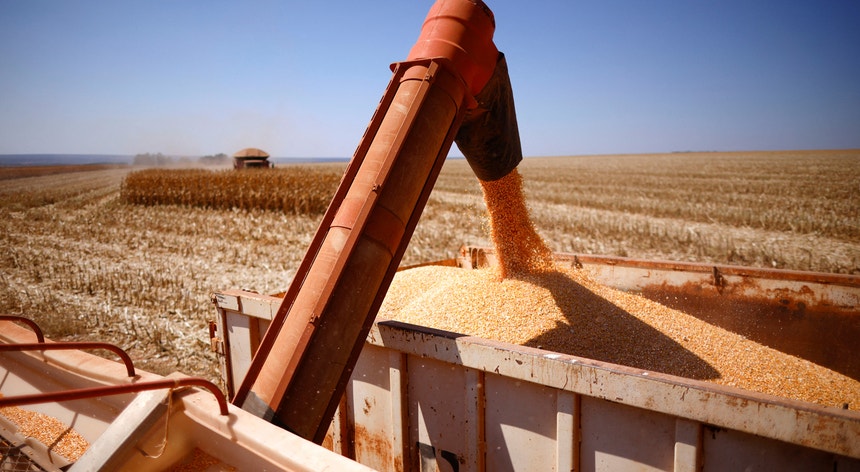Specialists from the Brazilian agency ANEC estimate that Corn exports from Brazil reached 8.8 million tons in August this yearrecording an increase compared to 6.9 million tons in the same period of 2022.
Maize produces enough for three crops a year, and there are still large tracts of undeveloped agricultural land. According to the analysis conducted by Reuters on the transfer of Brazilian maize, the country “Finally overcoming some of the infrastructure bottlenecks that have long impeded the transportation of crops to global markets.”
In this diagnosis makes it clear Producers ship corn through ports in northern Brazil. These infrastructures Use of the waterways of the Amazon River Basin through which grain is transported.
In this way, Brazil is on track to surpass the volume of exports through the port of Santos, for the third year in a row. Santos, located in southeastern Brazil, has long been the main port for shipping grain.
But this year, the ports of Barcarina, Itaqui, Itaquatiara and Santarem have overtaken Santos’ port of exit. About 37 percent of all Brazilian maize exports are processed here, according to Brazil’s agricultural agency CONAP. Only 24 percent passed through Santos.
exceeded North American production
Interruptions caused by the war in Ukraine – the country’s largest grain exporter – and trade tensions between the US and China opened room for Brazilian expansion, but it was boosted by improved export capacity.
South competitiveness can lead to Reduced corn exports from the United StatesNot least because the corn supply agreement with China was announced last year.
Brazil may have begun a long era of supremacy over US corn exports.Analysts noted.
“We celebrated a lot when the volume (of maize exports) equalized through the northern ports of Santos,” says Sergio Mendez, head of Brazil’s grain export group ANEC. “By using the northern ports, it is possible to save 20 riyals (nearly four euros) per ton (of corn),” he stressed.
Brazil-China: The Cheaper Corn Route
The new export capacity has helped Corn transported from ports in northern Brazil to compete for logistical costs with American farmers.
In 2008, sending a ton of soybeans from Iowa (USA) to Shanghai cost 77 percent of the amount shipped in ports in northern Brazil, but in March 2023 the opposite happened. Shipping costs from the US are now up 5%, according to data from the US Department of Agriculture and Brazil’s ESALQ-LOG.
For maize, the transport values are very similar, says Tiago Pera, coordinator of the research and extension group on agro-industrial logistics in the Department of Economics at the Louise de Queiroz College of Agriculture.
The port of Santos, which exported nearly three times more than the four northern ports in 2015, has now been overtaken after infrastructure investments expanded port capacity in the Amazon.“The larger share of shipments through the northern ports reflects cheaper shipping costs compared to the routes to the southern and southeastern ports”said Tommy Guth, Administrator of Conab – Companhia Nacional de Abastecimento.
a China’s state-owned COFCO is now building a new major grain terminal in Santos, after obtaining a 25-year license to operate a 14mt unit. Shipments from COFCO STS11 are scheduled to begin in 2026.
COFCO GROUP is the largest food manufacturer and trader in China. It is also one of the leading agribusiness groups in Asia.
The railway will link the port of Santos with the agricultural states of Tocantins, Goiás, Minas Gerais and Mato Grosso, and aims to boost another important route for transporting Brazilian crops to world markets.
But lacking storage areas
However, the Brazilian agricultural industry has not yet overcome all the logistical problems. Farm storage capacity remains small compared to competing grain powerhouses such as Canada, the United States and Argentina.
The lack of silos, where producers can store corn and then bring it to market only when appropriate, means Brazilian farmers are forced to sell their crops quickly.
Brazilian corn exports to China increased by 194%
Konab expects total maize production in Brazil to be around 2023 130 million metric tons, the highest ever, and exports will reach 50 million metric tons for the first time.
Chicago corn fell from a 10-year high in April 2022 to a 2-1/2 year low this month, in part due to ample supplies from Brazil.Since 2019, the United States has imposed an additional 10% tariff on US corn imported to China as a trade retaliation.
The combination of higher corn export prices, retaliatory tariffs against Beijing and agreements in the context of BRICS – the geopolitical and economic bloc formed by Brazil, Russia, India, China and South Africa – will allow Chinese companies to turn to alternative suppliers to diversify imports and increase food security.
The last BRICS summit was held in Johannesburg, South Africa, from August 22 to 24. “The original members had two things in common: large economies and potentially high growth rates,” Bloomberg economists recall.
And at the end of 2022, Beijing gave the green light to several Brazilian companies to export corn to China (the list includes 400 companies). According to market estimates, Brazil could export about five million tons of corn to China this year – ten percent of the world’s total corn and maize exports. 194 percent more Brazilian maize exports to China in 2022.

“Wannabe internet buff. Future teen idol. Hardcore zombie guru. Gamer. Avid creator. Entrepreneur. Bacon ninja.”

